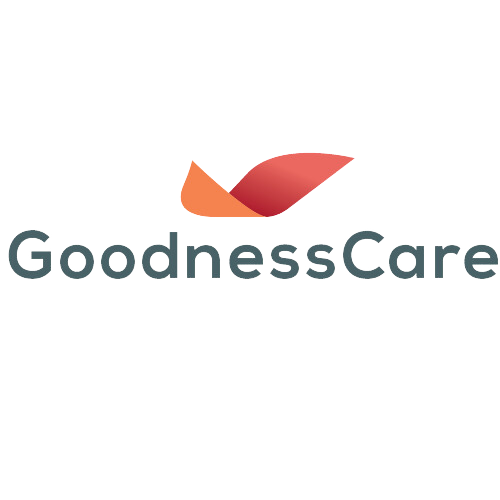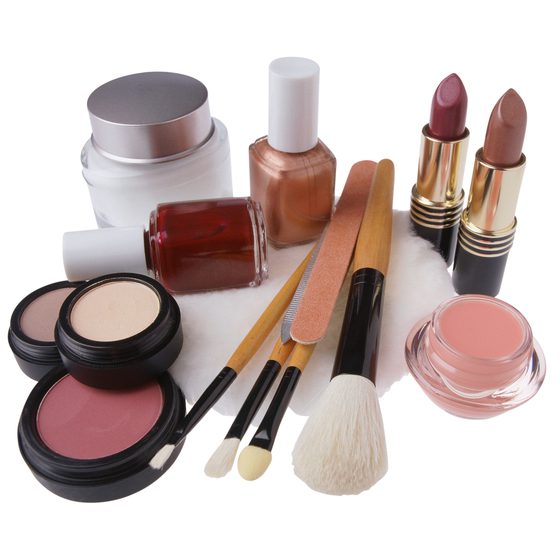Advertising is essential in shaping consumer perception and driving purchasing decisions. The cosmetics industry, too, relies heavily on advertising, with promotional campaigns becoming more advanced and extensive. Here, we delve into cosmetics advertising, exploring its evolution, techniques, and impact on society.
The Evolution of Cosmetics Advertising
Cosmetics advertising has a rich history dating back to the early 1900s when ads targeted women by presenting beauty products to boost their appeal. At that time, print ads were the primary medium, featuring illustrations and later photographs of elegant women representing the ideal look of the era.
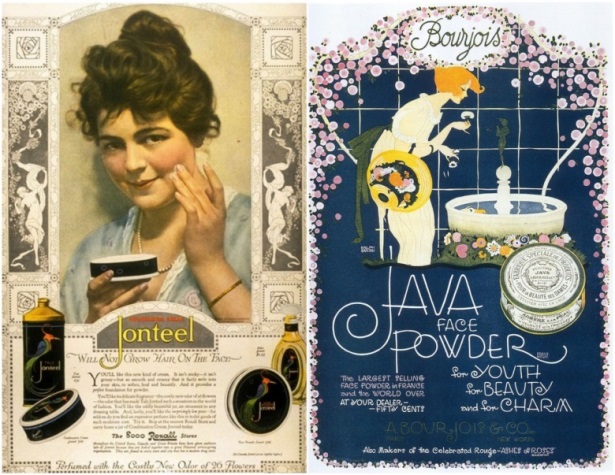
The 1950s marked the emergence of television as a novel avenue for cosmetics advertising. TV commercials began to feature glamorous Hollywood actresses endorsing products, solidifying the association between beauty and fame in consumers’ minds.
The 1980s and 1990s witnessed the rise of more audacious campaigns that pushed the limits with bold imagery and messages.
The advent of the internet and social media has dramatically transformed the cosmetics advertising landscape. Advertisers have tailored their campaigns to suit platforms like YouTube, Instagram, and TikTok, engaging a wider audience with customized and interactive content. Influencer marketing has gained prominence, harnessing the influence of social media personalities to drive product sales.
Techniques Used in Cosmetics Advertising
Cosmetics advertising employs various techniques to capture consumers’ attention and encourage product purchases. Here are some common strategies used in cosmetics advertising, along with examples:
Celebrity endorsements
Cosmetic brands often collaborate with celebrities, using their fame and influence to promote products. For instance, Jennifer Aniston has been the face of Aveeno skincare, while Rihanna’s collaboration with MAC Cosmetics for the Viva Glam lipstick line was highly successful.
Influencer marketing
Brands partner with social media influencers to promote their products, leveraging the influencers’ loyal following and credibility. For example, Zoe Sugg (Zoella), A British influencer known for her blog and YouTube channel, has worked with beauty brands on product endorsements and even launched her range of beauty products.
Emotional appeal
Cosmetics ads often evoke confidence, happiness, and empowerment, encouraging consumers to associate positive feelings with the brand. For example, Dove’s “Real Beauty” campaign promotes self-esteem and body positivity by featuring women of diverse shapes, sizes, and ethnicities.
Before-and-after stories
Demonstrating the effectiveness of a product through before-and-after stories is a powerful way to showcase its benefits. For example, Proactiv uses images of customers with acne before using their products and clear skin afterward to highlight the effectiveness of their acne treatments.
Product placement
Brands may strategically place their products in TV shows, movies, or music videos to subtly promote them. For instance, the popular TV show “Riverdale” featured Covergirl products in several episodes.
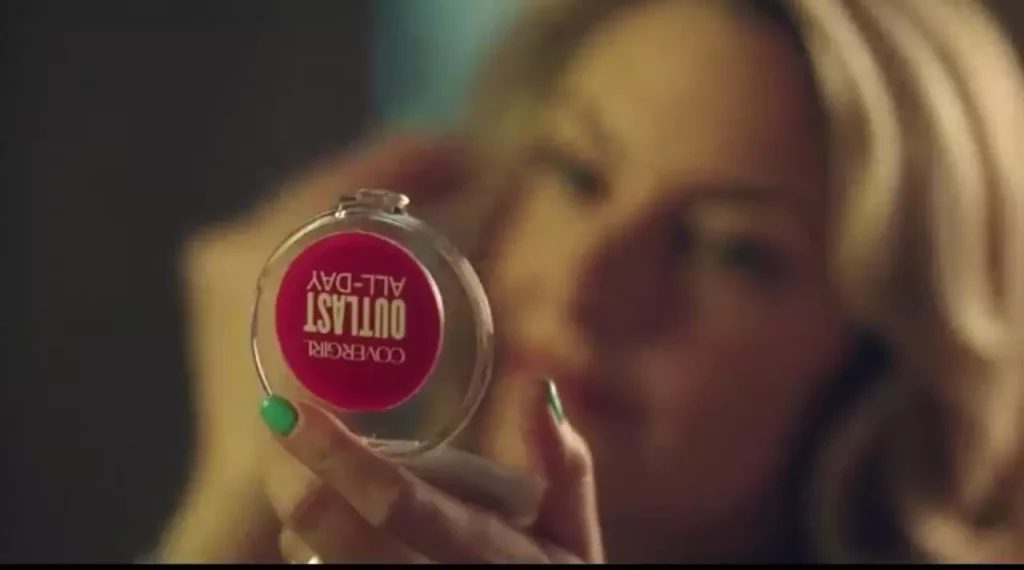
Limited edition releases
Limited edition products can drive consumer interest and demand by creating a sense of urgency and exclusivity. Pat McGrath Labs launched a Star Wars-themed collection that quickly became a must-have for fans of the franchise and beauty enthusiasts alike. The limited availability and unique packaging design contributed to its rapid sell-out.
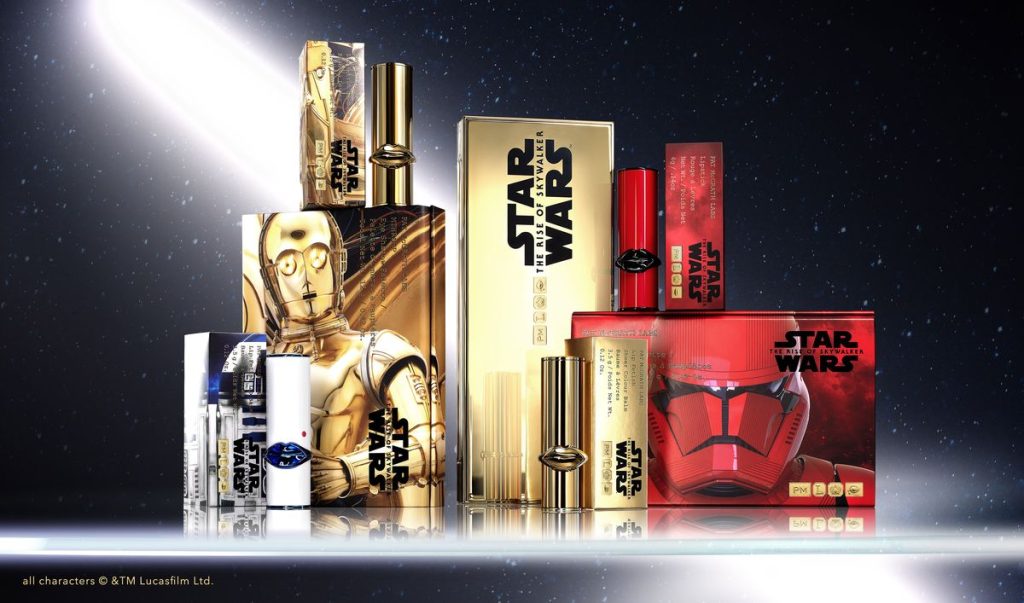
Storytelling
Ads that tell a story can connect the consumer and the brand, making the product more memorable. Over the years, L’Oréal Paris has featured various celebrities and real people in its campaigns, each sharing their interpretation of what makes them worth it, from overcoming adversity to achieving personal goals. This narrative approach invites consumers to reflect on their worth and aspirations.
Scientific claims
Cosmetics ads often use scientific language and data to demonstrate the effectiveness of their products. For instance, La Roche-Posay promotes its Anthelios sunscreen range using the scientific claim of containing Cell-Ox Shield™ technology, a combination of physical sun filters at different particle sizes for improved protection and antioxidants to help protect against free radicals.
4 Cs Model for cosmetics advertising
The 4 Cs Model for cosmetics advertising is a strategic framework that helps brands create effective and consumer-centric campaigns. The four Cs stand for Consumer, Cost, Communication, and Convenience. This model shifts the focus from traditional advertising methods to a more consumer-oriented approach, ensuring that advertising efforts resonate with the target audience.
- Consumer: The first C in the model emphasizes understanding the target consumer. This includes researching and identifying the audience’s demographics, psychographics, preferences, and pain points. By thoroughly understanding the consumer, brands can create advertising campaigns that address their needs, desires, and aspirations. For example, in cosmetics advertising, a brand might identify that its target audience values organic and cruelty-free products and create campaigns emphasizing these attributes.
- Cost: The second C in the model focuses on the cost to the consumer, not just in terms of price but also time, effort, and opportunity. The goal is to create campaigns that highlight the value and benefits of the product, making it worth the investment for the consumer. In cosmetics advertising, this might involve emphasizing a product’s long-lasting nature, multiple uses, or the high-quality ingredients that justify the price and encourage purchase.
- Communication: The third C is about effective communication, ensuring the brand’s message reaches the target audience through the most appropriate channels. This involves selecting the right mix of media platforms, such as social media, TV commercials, print ads, or influencer marketing, based on where the target audience is most likely to engage. In addition, the messaging should be clear, consistent, and relevant to the audience’s needs and interests. For example, a cosmetics brand targeting a younger demographic might use Instagram and TikTok to showcase makeup tutorials and product reviews.
- Convenience: The final C in the model is focused on making the product easily accessible and convenient for the consumer to purchase. This involves considering distribution channels, such as online stores, brick-and-mortar retailers, or subscription services, to ensure the product is readily available. Additionally, brands should ensure that their advertising campaigns drive consumers to these points of purchase, making buying the product as easy as possible. For instance, a cosmetics brand might offer a seamless online shopping experience with quick shipping and easy returns.
Focus on something bigger, broader, and more abstract than the item itself
When advertising cosmetics, focusing on something bigger, broader, and more abstract than the item itself can create a more memorable and impactful campaign. This approach can evoke emotions, create connections, and encourage consumers to think beyond the product’s immediate function. Here are some strategies to consider:
- Promote a lifestyle: Instead of solely focusing on the product, create a narrative around the lifestyle that the product represents. This can involve showcasing how the product fits into a specific way of living or how it contributes to the consumer’s overall identity. For example, a cosmetics brand might promote a healthy, active lifestyle by showcasing its products as part of a holistic self-care routine.
- Emphasize values and beliefs: Align your advertising campaign with the values and beliefs that resonate with your target audience. This can include sustainability, ethical sourcing, cruelty-free practices, or inclusivity. By focusing on these broader concepts, you can connect with consumers who share these values and build brand loyalty.
- Inspire self-expression: Encourage consumers to see your cosmetic products as tools for self-expression and creativity. This can involve showcasing how your products can be used differently to achieve various looks, highlighting the limitless possibilities for personalization and artistic experimentation.
- Emotional storytelling: Use storytelling to evoke emotions and create a deeper connection with consumers. This can involve telling the stories of real people who use your products, showcasing how they have impacted their lives, or developing fictional narratives that evoke emotions like joy, confidence, or nostalgia.
- Empowerment and self-confidence: Develop campaigns focusing on empowerment and self-confidence, encouraging consumers to embrace their individuality and unique beauty. By promoting a message of self-love and acceptance, your brand can foster a positive relationship with consumers and create a sense of belonging.
- Social responsibility: Highlight your brand’s commitment to social or environmental causes, such as supporting charitable organizations, reducing waste, or promoting fair labor practices. By focusing on the broader impact of your brand, you can demonstrate your commitment to making a difference and appeal to consumers who value corporate social responsibility.
- Cultural connections: Showcase the cultural heritage, traditions, or history associated with your products or ingredients. By tapping into the broader cultural context, you can connect with consumers and evoke a sense of pride or belonging.
- Celebrate diversity: Emphasize the importance of diversity and inclusivity in your advertising campaigns by showcasing a wide range of skin tones, ages, body types, and genders. Doing so can create a sense of belonging for a wider audience and foster a more inclusive brand image.
- Encourage self-care: Position your cosmetics products as part of a holistic self-care routine that promotes mental, emotional, and physical well-being. This approach can help consumers associate your brand with self-nurturing and self-improvement, extending the value of your products beyond their immediate functionality.
- Highlight human connections: Use your advertising campaigns to emphasize the importance of human connections, relationships, and shared experiences. This can involve showcasing how your products can enhance bonding, celebration, or togetherness, creating a deeper emotional resonance with your audience.
- Artistic collaborations: Collaborate with artists, photographers, or designers to create unique and visually captivating advertising campaigns that showcase the artistic potential of your products. This approach can help elevate your brand by associating it with creativity, innovation, and artistic expression.
- Escapism and fantasy: Develop advertising campaigns that transport consumers to a world of fantasy, imagination, or aspiration. This can involve creating dreamlike visuals, whimsical narratives, or aspirational settings that invite consumers to explore new possibilities and escape from the everyday.
- Explore global influences: Incorporate global influences, trends, or styles into your advertising campaigns to create a sense of adventure, discovery, and curiosity. You can create a more culturally rich and engaging brand narrative by showcasing diverse beauty traditions and techniques.
- Sensory experiences: Focus on the sensory experiences associated with your cosmetics products, such as textures, scents, or tactile sensations. By emphasizing these sensory aspects, you can create a more immersive and evocative advertising campaign that appeals to consumers’ emotions and senses.
- Nostalgia: Tap into the power of nostalgia by creating advertising campaigns that evoke memories of the past, whether it’s through the use of vintage-inspired visuals, retro color palettes, or references to popular culture from a specific era. This approach can create an emotional connection with your audience by invoking feelings of comfort, familiarity, and nostalgia.
- Nature-inspired themes: Incorporate nature-inspired themes into your advertising campaigns by showcasing the natural ingredients used in your products or highlighting the connection between beauty and the natural world. This approach can resonate with consumers who value environmental sustainability and seek products that align with their eco-conscious lifestyle.
- Personal transformation: Focus on personal transformation and growth in your advertising campaigns. This could involve showcasing how your cosmetics products can help individuals express their evolving identity, enhance their self-confidence, or mark important life milestones. By emphasizing personal transformation, your campaigns can resonate with consumers on a deeper, more personal level.
- Limited edition and exclusivity: Create a sense of exclusivity and urgency by promoting limited edition products or collaborations. This approach can generate excitement and buzz around your brand while encouraging consumers to act quickly to secure the exclusive items.
- Community-building: Encourage community and belonging among your customers by creating advertising campaigns emphasizing shared experiences, values, or interests. This can involve featuring user-generated content, hosting online events or workshops, or partnering with like-minded brands or influencers.
- Educational content: Offer valuable and informative content beyond product promotion, such as makeup tutorials, skincare routines, or ingredient guides. By providing helpful information, your brand can be a trusted resource and authority in the cosmetics industry.
- Seasonal or thematic campaigns: Develop seasonal or thematic advertising campaigns that align with holidays, cultural events, or specific themes. This approach can help create a timely connection with your audience and generate excitement around your products during specific times of the year.
Emotional Persuasion
Emotional persuasion plays a significant role in cosmetics advertising, as it helps create a strong connection between consumers and the brand. By tapping into consumers’ emotions, brands can influence their decision-making process, encourage brand loyalty, and drive sales. Here are some critical aspects of emotional persuasion in cosmetics advertising:
- Emotion-driven storytelling: Develop compelling narratives that evoke joy, nostalgia, love, or self-confidence. Stories can showcase the personal experiences of real people, create fictional scenarios, or build aspirational worlds that resonate with your target audience. Emotion-driven storytelling helps create an emotional bond between consumers and the brand, making the advertising campaign more memorable and impactful.
- Visual elements: Use powerful visuals, including images, colors, and design elements, to evoke specific emotions and create a desired mood. For example, warm colors can convey feelings of happiness and comfort, while cool colors can create a sense of calm and relaxation. A carefully crafted visual identity can help establish an emotional connection with consumers and make your brand more recognizable.
- Influencer marketing: Partner with influencers who share the same values as your brand and have an emotional connection with their audience. Influencers can share their personal experiences and stories, creating a sense of authenticity and trust with their followers. This emotional connection can influence consumers’ purchasing decisions and strengthen their relationship with your brand.
- Focusing on values: Align your advertising campaigns with the core values that resonate with your target audience, such as sustainability, inclusivity, or self-expression. By promoting these values, you can evoke emotions of pride, belonging, and loyalty among consumers, encouraging them to support and engage with your brand.
- Music and sound: Leverage the power of music and sound in your advertising campaigns to create an emotional atmosphere that complements your visuals and messaging. A well-selected soundtrack can elicit strong emotions and create a lasting impression on your audience.
- Empowerment: Develop campaigns focusing on empowerment and self-confidence, inspiring consumers to embrace their individuality and unique beauty. By promoting a message of self-love and acceptance, your brand can foster positive emotions and create a sense of belonging among your audience.
- Social causes: Highlight your brand’s commitment to social or environmental causes, such as supporting charitable organizations, reducing waste, or promoting fair labor practices. By focusing on the broader impact of your brand, you can evoke emotions of compassion, empathy, and pride among consumers who value corporate social responsibility.
Process of Emotional Persuasion in Cosmetics Advertising
Emotional persuasion in cosmetics advertising involves using various techniques and strategies to evoke emotions in consumers, ultimately influencing their attitudes, behaviors, and decision-making. Here’s a step-by-step process for incorporating emotional persuasion in your cosmetics advertising campaigns:
- Identify your target audience: Understand who your target audience is regarding demographics, psychographics, preferences, and needs. This information will help you create a campaign that resonates with them emotionally. Suppose your target audience is women aged 25-40 who value natural and eco-friendly beauty products. Understanding their preferences and needs will help you create an advertising campaign that resonates with them emotionally.
- Choose the desired emotional response: Determine which emotions you want to evoke in your target audience, such as confidence, self-love, nostalgia, excitement, or trust. Consider how these emotions align with your cosmetics brand identity, values, and messaging.
- Develop a compelling narrative: Craft a story or message that evokes desired emotions. This can involve personal beauty journeys, fictional scenarios, or aspirational narratives that resonate with your target audience. Ensure your narrative is relatable, engaging, and consistent with your brand’s overall messaging.
- Select appropriate visual elements: Use powerful visuals, including images, colors, and design elements, to support your narrative and evoke the desired emotions. Consider how different visual elements can influence your audience’s mood and emotional response, such as using warm colors to convey feelings of happiness and comfort.
- Leverage music and sound: Choose music and sound effects that complement your visuals and narrative, creating an emotional atmosphere that enhances your campaign’s overall impact.
- Utilize influencers or testimonials: Partner with beauty influencers or include testimonials from real customers to create a sense of authenticity, trust, and emotional connection. By sharing their personal experiences and stories, influencers and customers can help reinforce the emotional impact of your campaign.
- Test and refine your campaign: Test your cosmetics advertising campaign with a sample of your target audience to gather feedback on its emotional impact. Use this feedback to refine your campaign, ensuring it effectively evokes the desired emotions and achieves your marketing objectives.
- Launch and monitor the campaign: Once finalized, launch it across various channels (such as TV, print, social media, or online platforms) to reach your target audience. Monitor the campaign’s performance, including engagement metrics, audience sentiment, and sales, to measure its emotional impact and overall effectiveness.
